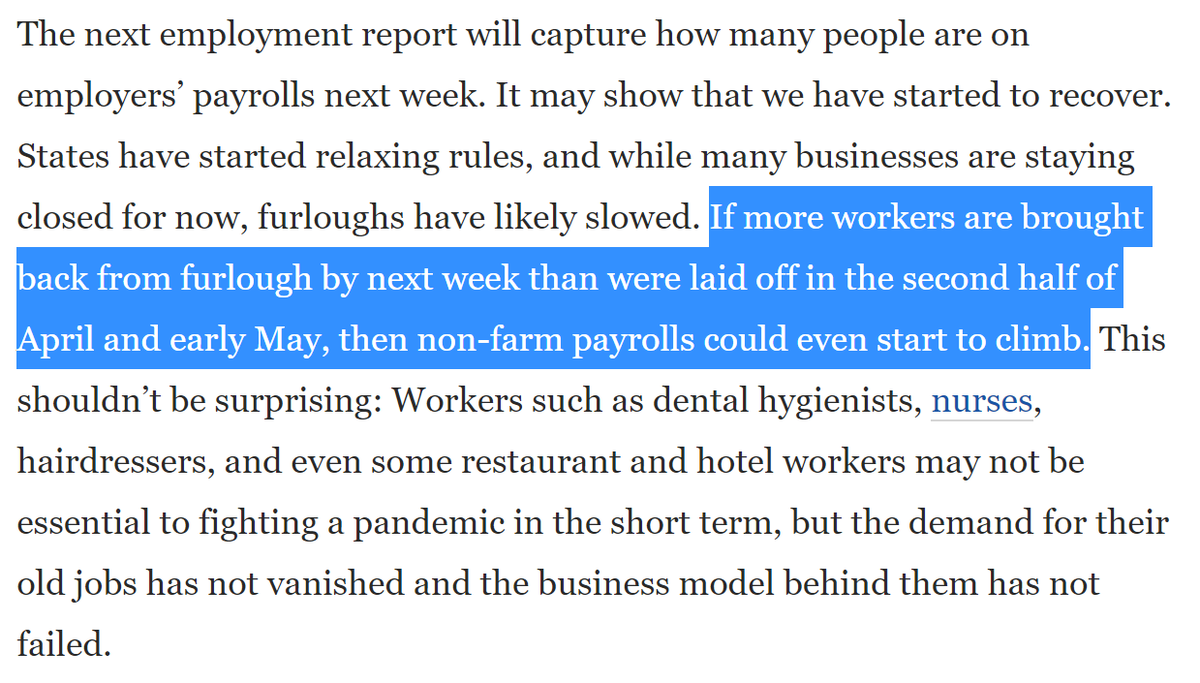The unemployment rate is DOWN to 13.3 percent (instead of up to 20% as forecast).
There's going to be a lot to unpack here...
1. This isn't a typical recession, and it's surprisingly difficult to even define what it means to be employed or unemployed
2. Covid has forced the BLS to adapt their methodology *far* more than they typically do, which has unknown effects.
It's hard to escape the conclusion that the economy bottomed in early/mid May.
We're in a massive and deep hole, and it'll take a while to climb out, but at least the hole isn't getting any deeper.
(Her whole piece was excellent: washingtonpost.com/opinions/2020/…)

But it's still only one-eighth of last month's monstrous decline of -20.7 million. (Also a record.)
1. Covid pushed the economy into a massive hole
2. It's so deep that even just a partial recovery will yield historically unprecedented growth rates
3. The economy is still in a bad bad place
The changes are going to be dramatic and positive, but that's largely because the levels are even more dramatically negative.
It's simple arithmetic that when millions of businesses are shuttered that employment will tank, and any reversal will lead jobs to spike.
The only real surprise was that the spike started this month, rather than next.
Very little, I'm afraid. We knew that a partial unwinding of the shutdown would lead to a partial reversal of job losses.
The important question remains how many jobs will resume, and how quickly. That remains unknown.
20 million people lost their jobs, causing unemployment to rise near Depression levels.
Today's data says 1-in-8 of those jobs returned.
But the real question is what'll happen to the rest? Even if half return we're replaying the Great Recession
Stocks rose about 2-3% on the news.
That's the sort of response you would see if payrolls were half a million or maybe a million higher than expected. In reality, today's number was 10 million higher than forecast
Markets are reacting to today's jobs report as if it were pretty good news, but it's far short of great news and that seems about right.






